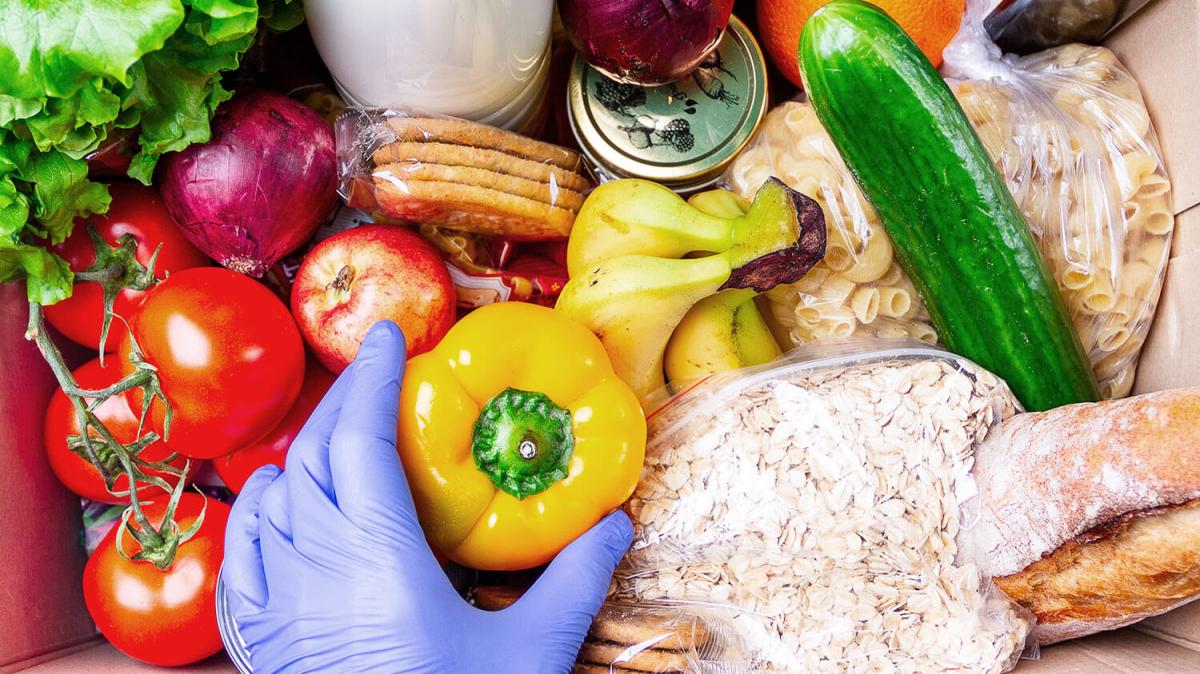Healthy Food Access
PROMOTING LOCAL BUSINESS & COMMUNITY HEALTH
Health Promotion Materials Healthy Retail Healthy Pantries I Need Food

Healthy Food Access is the means to consistently find, afford, choose and use nutritious & safe food. Access to healthy food increases nutrition security, which emphasizes having the right kinds of nutritious foods versus simply having enough foods.
Addressing All Four Food Access Categories
A thriving community isn’t complete without a store to buy fresh food. Without a grocery store or corner store, a small town or neighborhood can lose residents, fall into poor health and lose economic stability. A comprehensive approach ensures that communities think about both the supply and demand of fresh food. Explore the four food access categories here:
Find
All people deserve access to all five healthy food groups.
The ideal store or pantry has:
- Fresh, frozen or canned fruit without added sugar
- Fresh, frozen or canned vegetables without added sauce
- A variety of whole grains such as brown rice, pasta or bread
- Lean protein including plant sources like beans and legumes
- Low-fat dairy such as 1% milk, yogurt and cheeses
Finding healthy foods isn’t just up to the store or pantry. Community leaders and planners can consider the walkability and accessibility of stores and pantries for patrons, especially the elderly and disabled as well as patrons with carts and strollers. Stores and pantries located along bus routes, walking and bike paths and those in compliance with ADA are vital to a thriving community.
Resources
- Assess your store using NebNEMS
- Is your store or pantry accessible? Check the ADA website
- Assess your pantry using NEFPAT
- Assess your pantry using MyPlate Scorecard
- I Need Food
Afford
Health-promoting stores and pantries participate in, advertise, or assist with sign-up for nutrition programs such as WIC, SNAP, and Double Up Food Bucks .
When stores and pantries participate in and advertise nutrition programs they help keep their community food secure, increase the viability of local businesses, and bring additional dollars into the local economy. Stores who welcome SNAP, WIC and DUFB programs have increased buying power with food distributors, which means more variety, better quality of perishable foods, and more reasonable prices for the community..
Choose
Healthy foods are promoted and culturally appropriate.
Store and pantry environments that promote fresh, healthy foods are more appealing to customers and help encourage healthful purchasing. A store that looks fresh and colorful is welcoming and is viewed positively by the community. Customers want to buy from stores that are safe, clean, and attractive. Nebraska Extension staff can help stores organize, set displays and select promotional materials that draw customers to healthy foods. Store and pantry managers can use the “What is healthy?” resource at the right to determine which foods can be promoted as healthy. Learn how to choose ready-to-eat fruits and vegetables and how to store them for optimal taste by clicking the “Seasonal Produce” link under resources.
Resources
- What is Healthy? Use this map to determine what to promote
- Help people choose healthy foods
- Seasonal Produce
- Seasonal Produce Handouts
Use
CAN I PREPARE IT? STORES CAN SUPPORT THE COMMUNITY IN THEIR HEALTH GOALS BY PROVIDING OPPORTUNITIES TO LEARN NEW SKILLS AND NUTRITION KNOWLEDGE.
When grocery stores and pantries participate in nutrition programs they help keep their community food secure, increase the viability of their business, and bring additional dollars into the local economy. Stores who welcome all customers have increased buying power with food distributors, which means more variety, better quality of perishable foods, and more reasonable prices for the community.
Resources
- Nutrition Education Program Resources
- Recipes
- Newsletters & Blogs
- Follow NEP on Facebook
- Seasonal Produce
- Looking for a free online, at-home option for learning about nutritious ways to prepare meals? Try The Dish
- Find Nutrition classes near you